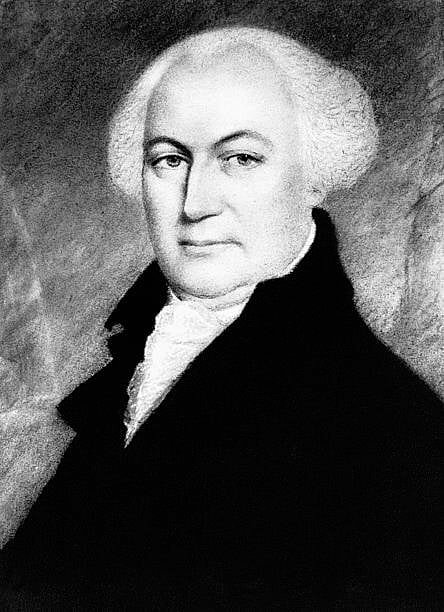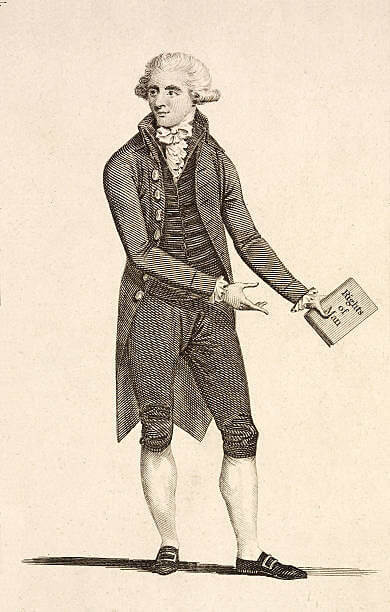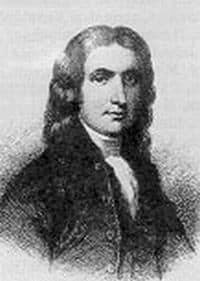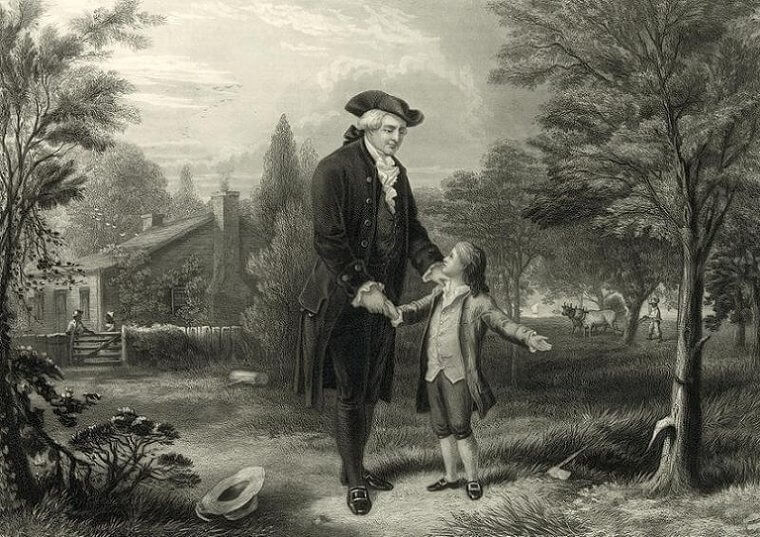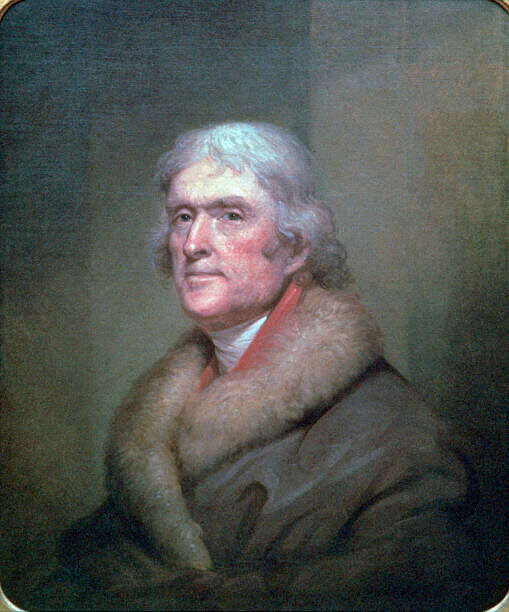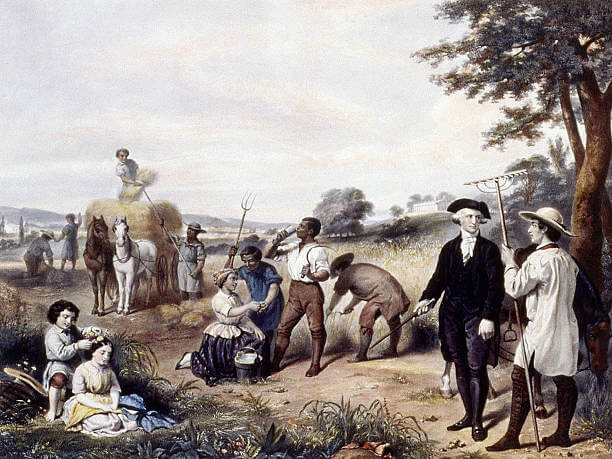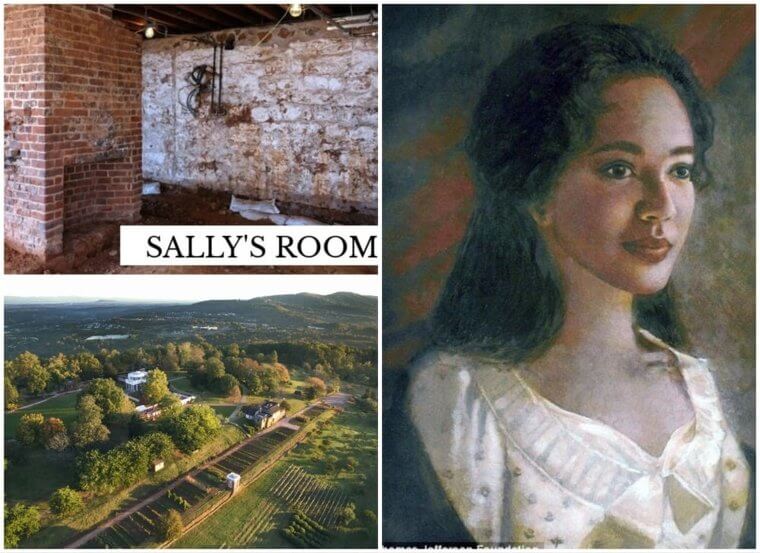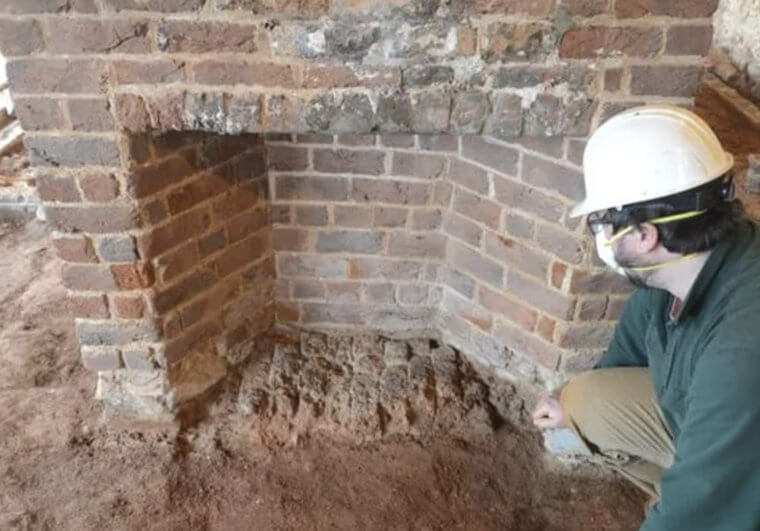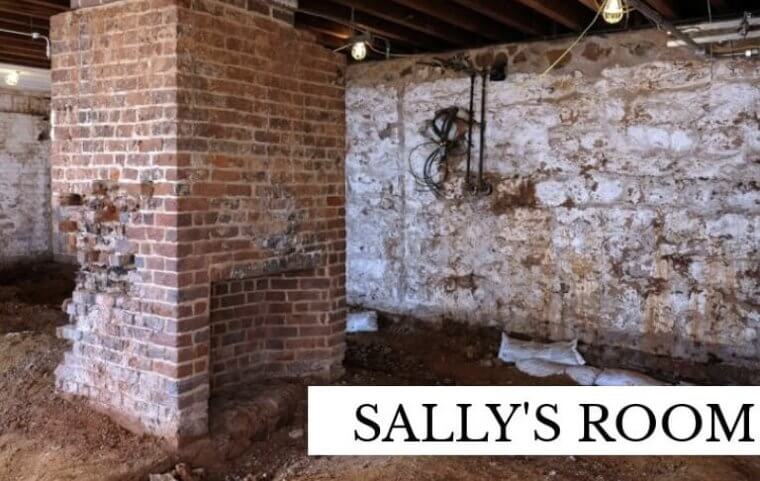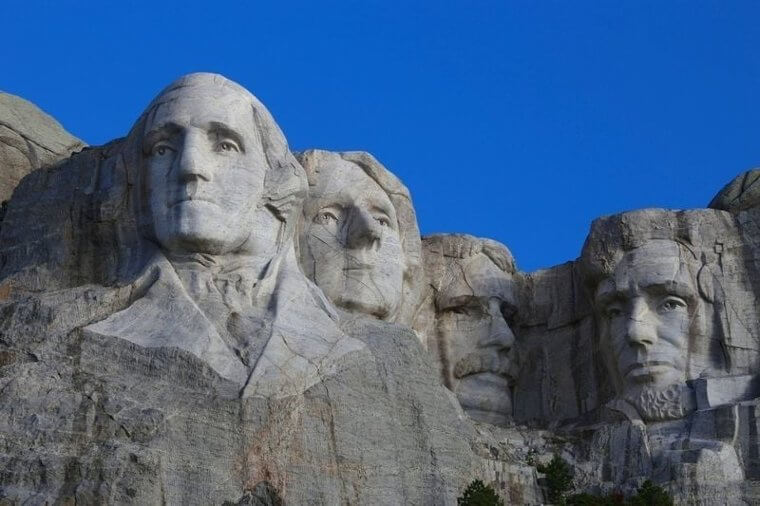The term "The Founding Fathers" refers to a group of revolutionary leaders instrumental in America's independence and establishing the republic of the most powerful country in the world. People, however, have forgotten they were humans after all, and that among their heroic tales lie strange and startling details that present us with a flawed, yet truthful picture of America's greatest. Read more to discover shocking facts about America’s Founding Fathers.
Patrick Henry Treated His First Wife Horribly
Patrick Henry was elected as the first post-colonial Governor of Virginia and held the seat for seven terms. While he was a well-known advocate and his professional life was stellar, his personal life was murky.
Henry’s first wife, Sarah, had a mental health crisis after the birth of their sixth child and was institutionalized. Owing to the inhuman conditions of the institution, the governor decided to bring her back and thought locking her up in his cellar was a better option. An untrained enslaved person took her care, but sadly, Sarah passed away after four years. Henry secretly buried her in the basement and got remarried in 1777.
Judge George Wythe Was Poisoned by His Grandnephew
An established judge and mentor to notable personalities like Thomas Jefferson, John Marshall, and Henry Clay, George Wythe was one of Virginia's seven signatories to the Declaration of Independence. With a prominent career in law, Wythe accumulated a hefty fortune which soon became the target of his grandnephew, George Wythe Sweeney, to fund his nefarious ways.
When Wythe threatened to disinherit Sweeney, the seventeen-year-old poisoned the judge and his caretakers with arsenic. Wythe and his house servant succumbed to the poisoning, but he managed to remove Sweeney from his will before passing away. Unfortunately, Sweeney was acquitted as the surviving maid's testimony was invalid at the time due to her ethnicity.
Gouverneur Morris Used Whalebone as a Catheter
Gouverneur Morris is best known as the author of the Preamble to the United States Constitution and served as the United States Senator for New York for three years. Despite his wealthy upbringing, he was among the handful of leaders who strongly denounced slavery.
Sadly, on the health front, Morris had the worst luck. After losing a leg in a carriage accident in 1780, a blocked urinary tract became the bane of his existence years later. For some inexplicable reason, Morris chose to treat his condition by inserting a whalebone as a makeshift catheter in his private part. The statesman soon developed a fatal infection, ultimately leading to his demise.
Thomas Paine's Remains Were Exhumed and Auctioned Off
Thomas Paine was one of the most influential political writers of the late 18th century. He is also considered by many to be one of America's most outstanding founding fathers. Because of Thomas' opposition to organized Christianity, he was constantly ostracized and by the time of his passing, only six people attended his funeral.
In 1819, William Cobbert, a journalist, decided to give Paine a more befitting burial. He dug up the latter's bones but for some reason, wasn't able to go through with the plan. Nevertheless, after Cobbert's passing, his relatives found the remains of Thomas in his possession and auctioned them off.
George Washington Was a Cruel Slave Owner
While it is common knowledge that George Washington had reservations about the slave trade, he was often quick to exploit the opportunity whenever it presented itself. He first owned a slave at the age of 11 and by the time of his demise had about 123 personal slaves.
Though slave masters generally treated their slaves harshly, their actions were nothing compared to how George treated his slaves. If they were sick or injured, he paid no mind whatsoever, insisting that they work as hard as the others. In all, Washington could best be described as a taskmaster who had more regard for inanimate objects than he did for blacks.
The Founding Fathers Drank Large Amounts of Alcohol
Most often, America's Founding Fathers are portrayed as puritans who lived by high moral codes. Their acts of valor are described in many pages of history books. Hence, they serve as role models for younger generations.
Yet, it comes as a surprise to realize that these men consumed large amounts of alcohol back in the day. While people in today's world consume an average of 2 gallons of alcohol annually, our Founding Fathers downed about 7 gallons per year. This was largely due to the scarcity of clean water and the belief that alcohol had more health benefits than water.
The Supreme Court Jurist Who Stayed Behind Bars
Revolutionary turned Justice of the Supreme Court, James Wilson's tumultuous journey saw him go from a radical republican to a conservative aristocrat. After his daring defense of Philadelphia in 1779, he was known for helping those who had allied with the British, which eventually led him away from Congress.
James valiantly barricaded himself and 35 of his peers inside Fort Wilson. Sadly, this heroic last stand resulted in the loss of lives. Having introduced the three-fifths clause during America's war for independence, Justice Wilson lost everything he owned. Besides being in debtor's prison twice, the American patriot was taken into custody again before expiring at 55.
“Honest” John Hart’s Act of Kindness
"Honest" John Hart distinguished himself in colonial public office, becoming a fierce proponent of the revolutionary cause. After being elected as Speaker of New Jersey's General Assembly in 1776, he was wanted by British authorities for treason. This left the 65-year-old with no choice but to escape into the wilderness with his 13 children.
After the Continental Army's victory at Trenton, John finally returned to his home which had been ravaged by British occupiers. Yet, he showed immense kindness by welcoming over 12,000 soldiers under Washington's command for a brief respite before the Battle of Monmouth. Unfortunately, John passed away from kidney stones and couldn't witness the ultimate victory.
Injustice Is Ingrained Within Our Origins
George Washington is renowned for having false teeth crafted of wood. Yet, some believe that his dentures were made from real human teeth, probably of African slaves! Evidence found in the Mount Vernon Ledgers confirms this, noting a May 1784 transaction involving gold, ivory, and other materials.
Dr. Jean Le Mayeur's newspaper ads sought persons willing to sell their front teeth for two guineas each. Yet, Washington's records imply the nine teeth extracted from enslaved Africans cost him far less than the market rate. His surviving pair of dentures suggests that those who provided him with those false teeth had little choice in the matter.
Though Not A Founding Father, Andrew Jackson Was Just As Outrageous
In his first year as President, Andrew Jackson signed the Indian Removal Act, initiating a tragic episode in U.S. history. Passionate about relocating Southern Native Americans, the 1830 act swapped their lands with a designated Western area, today's Oklahoma. Although it didn’t directly permit forced removal, it led to the U.S. Army's imminent threat, forcing the Choctaw tribe into the deadly "Trail of Tears" in 1831, a journey marked by deprivation and cruelty, resulting in up to 4,000 deaths.
Another outrageous fact is that Jackson amassed his wealth largely through enslavement. At his death, he owned 161 slaves, actively participating in the domestic slave trade from Virginia to New Orleans during the 1790s and beyond. Unlike previous presidents, Jackson was directly involved in enslaving individuals. Disturbingly, he even offered a $50 reward for the return of an escaped slave, with an additional $10 for every 100 lashes given, up to 300. This detail highlights the brutal extent of his involvement in slavery.
Dr. Benjamin Rush's Beliefs Took the Lives of Many Americans
Dr. Benjamin Rush, a key character in the American Enlightenment, was also well-known for advocating "heroic medicine," or the practice of bloodletting and other extreme methods of cleansing the body in the hope of curing diseases. The practitioner, one of the city's top doctors at the time of the Philadelphia Yellow Fever Epidemic in 1793, saw up to 100 patients daily.
Nevertheless, few of these unfortunates survived his ways and died due to his antiquated and unscientific practices. Additionally, even without evidence, Rush assumed that Africans could not get yellow fever and refused to treat particular population areas, which worsened the outbreak. He also believed "Blackness" was a medical illness that could be remedied, which may have contributed to this apathy.
What Macabre Stories Are Made of
Known as "The First American" for his tireless attempts to unite the colonies, Benjamin Franklin is credited with innumerable achievements, including the crucial alliance with France during the Revolutionary War. Franklin lived in just one house before his death in 1790, and it is still standing today.
The home, located at 36 Craven Street in London, was discovered to be harboring a secret. More than 1,200 fragments of human bones buried beneath the property were found in 1998 while restoration work was being done. The human remains are thought to be roughly 200 years old and were buried when Franklin was living in the house. Many believed the bone fragments were hidden by his housemate William Hewson, a physician, and anatomist.
Liar Liar Pants on Fire
The tale of a young George Washington expressing his guilt over a damaged cherry tree and saying, "I cannot tell a lie," is another one that is frequently taught in American classrooms. Nonetheless, the apocryphal quote is nothing but a mockery of Washington's repeated self-serving deceptions. First, he blamed his interpreter for his confession of war crimes and feigned ignorance after signing the Fort Necessity yielding in 1754, his only formal surrender.
Then, even if the French-Indian War was sparked by Washington's admission that he had killed Joseph Coulon de Jumonville, he later denied committing the crime. Washington also led a group of officers to convince unknowing politicians that they, not the soldiers, should get free land.
Thomas Jefferson Forced a Teenager to Be His Lover
Although history books discuss a love affair between the Third American President, Thomas Jefferson, and a black woman, the truth might differ. After his wife Martha passed away, Jefferson started an affair with 16-year-old Sally Hemings, who got pregnant after spending two years with him in Paris. She could have got her freedom according to French Law, but he convinced her to return to Virginia. She did, but unfortunately, her baby didn’t survive.
Some historical resources state that Jefferson had six more children with Hemmings, and some writers like to portray their relationship in a romantic context. Yet, there was no consent, as she was enslaved.
John Adams Favored the British Monarchy
John Adams, the Second President of the United States, was always under the spotlight because of his authoritarian political tendencies. Even back then, his opinions were highly frowned upon, as he believed in the superiority of monarchy and favored the British one.
History books are filled with mentions of times when John Adam’s controversial opinions caused a negative stir. Even from the time he was Vice President to George Washington when suggested that people refer to Washington as His Highness. He believed that aristocracy was the only system to prevent chaos, and he even defended the accused British soldiers after the Boston Massacre.
Richard Stockton Was Captured and Tortured By the British
The first signatory to the Declaration of Independence, Richard Stockton, was an American lawyer who fell captive to the British when the Loyalist bounty hunters dragged him in the middle of the night during the Revolutionary War. He was immediately offered a conditioned pardon, which he refused. Instead, he endured brutal treatment that caused long-lasting health issues that he would suffer till the end of his life.
Moreover, his property was seized, and his library was burned. Eventually, President Washington petitioned for his release. He was set free under the condition to stop getting involved in politics, and he finally agreed, returning to what remained of his estate to spend the rest of his life in pain.
Andrew Jackson Killed A Man In A Duel
In a heated moment back in 1806, Andrew Jackson found himself in a duel with Charles Dickinson, following an intense argument related to horse racing, in which Dickinson accused Jackson of being a coward. Dickinson was quick to draw and managed to shoot Jackson in the chest, causing significant injury. Jackson maintained his composure, took careful aim, and returned fire, fatally wounding Dickinson. This event was one of over 100 duels Jackson would participate in throughout his life.
Years later, during the tumultuous times of the War of 1812, General Jackson took charge in New Orleans, imposing martial law to restore order in the chaotic city. Even after the war concluded, Jackson maintained this strict control for several more months, in an authoritative leadership style. When a local senator expressed concerns, Jackson had him arrested. Additionally, he didn’t hesitate to banish a U.S. District Court Judge from the city for challenging his actions...
George Washington Found a Legal Loophole to Keep His Slaves
While waiting for the new capital to be built, Washington D.C., George Washington had to relocate to Philadelphia, bringing some of his slaves to manage his property. Yet, in 1780, Philadelphia passed the Gradual Abolition Act, which meant that Washington had to let his slaves go.
According to this act, slaves were to be freed after spending six months in Philadelphia, so Washington came up with a plan. He would transport his slaves to the borders every six months, and they would return to start a new count. He also approved the Fugitive Slave Act in 1793 and conducted a three-year search campaign against an enslaved woman fugitive who escaped after learning that she would be given as a gift.
The Hidden Room Where Thomas Jefferson Kept A 14-Year-Old Girl
A Founding Father who wrote the Declaration of Independence. A secret room in Jefferson's famous home. A young slave who had 6 children in this room. Let's dive into the secrets...
Founding Father, Missing Girl
In many ways, it is hard to imagine America as we know it without Jefferson’s contributions as a Founding Father. Without him, America may be half the size and missing a Declaration of Independence. While his legacy is well deserved, some aspects of his life are not easy to reckon with...
Like the fact he owned a 14-year-old girl and kept her in a dark window-less room for 40 years.
He Opposed Slavery But Owned Over 500...
Thomas Jefferson’s home at the Monticello Plantation is visited by millions of people. He inherited these five thousand acres of land from his father and used them to keep hundreds of slaves, as was customary for a plantation owner at the time. But Jefferson opposed slavery, right?
He even called it a “hideous blot” on America. “All men are created equal,” he wrote. Weird, then, that he owned 607 slaves. But the controversy does not end there. It has been rumored that there was one slave in particular to whom Jefferson had taken a liking, a scandal throughout his entire life. That is why this secret room was an especially alluring discovery.
The Girl's Memory Was Covered By A Toilet
Somehow, this secret room managed to remain hidden until recently. A bathroom was put into place over the room in 1941 to accommodate visitors after the house was turned into a museum, and the room was unknown until then. It wasn’t until an old document was unearthed by historians that gave a clue of the secret.
The story of the poor woman enslaved by Jefferson, who also had a long-term relationship with him, was covered up under these new tiles and bathroom stalls. It was a scandal that his descendants denied for many years after. Now, many experts agree that he was likely the dad of her six kids... Now, all traces of her existence at Jefferson's famous home, which is even featured on the nickel, were obliterated. How did he get away with it?
His Own Grandson Gave Him Away
Researchers had to dig deeper, and they found a letter sent from Jefferson's grandson, Thomas Randolph. Without him, who knows if they would have found the secret room?
Randolph mentions a room unknown to most, placing it in the home’s south wing. Archaeologists were initially skeptical, but this was a random thing for him to lie about, and the addition of the restroom inspired the archeologists to investigate further. What lay beneath?
The Scandal Where His Own Friends Sold Him Out
In the early 1800s, Jefferson had many critics who held a vendetta against him. One of them was a man called Callender, who exposed him in a Richmond newspaper, hoping to slander Jefferson. If only he knew what he was about to uncover! Callender alleged that after Jefferson’s wife died, he entered into a relationship with another woman. Read it here:
A widow starting over with someone new may not sound scandalous, but Callender’s claim was that Jefferson’s new affair was with one of his slaves. Callender said she was Jefferson’s “concubine” who had come to the plantation as a child and kept “in a room of her own” at his Monticello estate.
The Little Room With A Fireplace
When the decision was made to knock down the bathroom in search of the secret room, the team finally discovered what was unknown for two hundred years. Sealed off from the world was a little room at around 15 by 13 feet with no windows and a large brick oven in the center. Now may be a good time to say she birthed six kids in this little space. It is safe to say the room contained the answers to some big questions.
The most interesting element of the room was its location. The house was large and the room could have been placed anywhere, but it was right down the hall from Jefferson’s bedroom. So, who was she?
Behind The Mystery Girl
Over forty years, Jefferson detailed every expense and slave activity, from midwife fees to errands. However, he scarcely mentioned this slave, likely to conceal her significance in his life. Plus, she was a baby when Jefferson inherited her family. Historians recently discovered more information on her:
The slave whose affair sparked centuries of gossip was Sally Hemings. Starting her affair as a teenager, Sally Hemings was the half-sister of Jefferson’s wife Martha. Sally Hemings was half white, half black, and like most African Americans at the time, her life was not easy. She was born into slavery and was brought to Monticello as a young girl where she was forced into household labor.
A "Near White and Handsome Girl"
It seems likely that Sally Hemings received preferential treatment because of her looks. Isaac Granger Jefferson, a blacksmith slaved owned by Jefferson, called Hemings “mighty near white” and “very handsome.” She was said to have long hair nearly down to her waist, and she worked as seamstress and chambermaid, which were less laborious jobs than other slaves had, allowing her to stay indoors. She carried on her work for the family until Jefferson died in 1826.
In Heming’s secret bedroom, historians discovered evidence that confirmed an old rumor. When Sally Hemings was 14 years old, she joined Thomas Jefferson on a trip to France. Her life would never be the same.
A Romantic Weekend Away?
It was controversial for Hemings to join in Paris, considering slavery was illegal in France. Nevertheless, this is where their personal relationship began in France, according to accounts from Heming's son.
Given the legal circumstances, Hemings could have stayed in France. However, she made the choice to stay a slave owned by Jefferson and return to the US. It is possible that she did not feel she had a real choice, or that something sparked between her and Jefferson, and returning to the States was her real desire.
6 Births, One Tiny Bedroom
Historians know that Sally Hemings became pregnant not long after the France trip. Four of Hemings's children lived to adulthood, and documentary evidence and DNA testing of Hemings and Jefferson's descendants in 1998, led most historians to believe that Jefferson was their father
Hemings and Jefferson both lived at Monticello for years, where Hemings had five more children whom Jefferson was most likely the father of. It is also believed that it was in the mystery room that the births took place.
Jefferson Gave Her Money to Leave After Freedom
While it may be easy to say that if she were unhappy she could have stayed in France, it would be unrealistic to expect Hemings to have embraced her freedom in France even if she wanted to, as a young girl in a foreign country with no support. She was given preferential treatment over other slaves and lived a relatively better life than most women born in her position.
Jefferson also allowed her children to live free, and his family granted Sally Hemings an unofficial freedom after Jefferson’s death. They also received a stipend to help them start new lives after leaving Monticello. Hemings was certainly close to Jefferson’s heart.
She Had Her Freedom, But She Stayed Close
Despite being granted her freedom, Hemings stayed at Monticello until Jefferson’s death. As the mother of Thomas Jefferson’s children, she was deeply entwined with her family, and leaving could have meant separation from her children or uprooting their lives.
Additionally, her extended family remained enslaved on the estate, further complicating any decision to leave. The era's pervasive racial prejudices and the precariousness of life as a freed Black woman presented daunting uncertainties, potentially making her life at Monticello seem like a safer option.
The Descendants In One Picture
With new DNA evidence, historians believe Thomas Jefferson was the father of all of Sally Hemings’ children. Though one child died during childbirth and another died very young, the link between Jefferson and Hemings was carried on in Harriet, Beverley, Madison, and Eston Hemings.
Having not come of age in Jefferson’s lifetime, Eston Hemings was granted freedom after Thomas Jefferson’s death. With his fair skin tone, being three-quarters white ancestry, Eston could pass as a white man and integrate into society. His life as a free man was a successful one, and he was married with three children. He even becomes known for his resemblance to his famous, deceased father.
Mirror Image
After getting his freedom and leaving Monticello, Eston went to Ohio where he inspired some curiosity. An article was published in the Ohio newspaper the Scioto Gazette with a detailed description of Eston. “Light bronze color, little over six feet tall…and dignified; his nearly straight hair showed a tint of auburn, and his face, indistinct suggestion of freckles.”
There were rumors that Eston was Thomas Jefferson’s son. One journalist made it his goal to uncover the truth, and he wanted to hear words straight from Eston’s mouth about the subject. An unknown man comes to Oklahoma looking like a former president. This was the hottest story in town.
A Perfect Chromosomal Match To Jefferson
When pathology professor Dr. Eugene A. Foster analyzed Eston’s descendant’s blood samples, he determined that “the Y chromosome of a descendant of Eston Hemings Jefferson made a perfect match to Jefferson’s…Thomas Jefferson was most definitely the father.”
While this news was of great interest to the world, the family was not surprised. The idea that they were descendants of Thomas Jefferson was passed down through the generations with stories of their family history. DNA evidence gave them confirmation, but there was never any actual doubt. However, there were some skeptics still waiting for more evidence.
Addressing The Rumors
Eston was well respected and known to be polite, with many townsmen holding him in high regard. When the journalist confronted Eston about his rumored parentage, Eston gave a response that the journalist was not expecting.
“Well, my mother, whose name I bear, belonged to Mr. Jefferson, and she never married.” Eston moved with his wife and children to Wisconsin, where they lived on a property they would come to own. Not known to him at the time, Eston was the key to solving the mystery of Jefferson and Heming’s relationship.
The Jefferson Foundation Will Not Agree To This Theory
The Thomas Jefferson Foundation was not moved by the DNA testing, and they suggested there must be an altogether different explanation for Jefferson’s DNA showing up in Hemings’ descendants. With a team of nine members, including four PhDs, the foundation started a research committee to prove its point.
After extensively reviewing the documents, the foundation put forth its theory. They claimed that Thomas Jefferson and Sally Hemings hardly knew each other at all and that he did not father her children. In a twist worthy of Jerry Springer, the foundation claims that it was Randolph Jefferson, brother of Thomas Jefferson, who fathered the children of Sally Hemings.
Two Sides To Every Story
The Thomas Jefferson Foundation says that Thomas Jefferson and Sally Hemings were rarely at Monticello at the same time and that he was absent during the times she would have been pregnant.
While their theory is plausible, they do not have much evidence to suggest that Randolph was the father, and the other side of the story just looks a whole lot stronger. When you look at the rumors and add the discovery of the bedroom and the letters from John Adams, it is hard to discount it for an entirely different explanation that lacks the same supporting evidence.
The Other Children Were All His Too
Historians have reached a consensus that Thomas Jefferson is likely the father of all of Sally Hemings’ children, including Harriet Hemings. Harriet was said to be beautiful like her mother. Despite her dark hair and eyes, she also had fair skin that allowed her to integrate into a white society, just as her brother did. In fact, the white man she married, who was said to be of “good standing,” never even knew that she was not fully white.
Madison Hemings was another of Sally Hemings’ sons. Unlike his siblings, he identified as black and did not try to live in a white society. He moved with his mom to Charlottesville, Virginia after Jefferson died, where he worked as a farmer and carpenter. With a wife and children, he moved to Ohio, a free state, following the death of his mother.
Finding The Truth
While rumors always abounded regarding Thomas Jefferson’s relationship with Sally Hemings, the discovery of the secret room brought the stories back into the limelight. Seeing the close proximity with which they lived, it is hard to ignore the probability of an intimate relationship.
The director of archeology at Monticello, Fraser Neiman, reflected on the discovery. “This room is a real connection to the past. We are uncovering and discovering and we’re finding many, many artifacts.” While the focus has always been on the scandalous nature of their affair, the artifacts they found give a glimpse into the lives of Hemings and Jefferson, the real people behind the legends.
All Men Are Created Equal
Perhaps the hardest thing to reconcile is that the writer of the American creed that “all men are created equal” lived in a manner that contradicted the famous words he wrote and, presumably, believed. In 1784, nearly 80 years before the Emancipation Proclamation, Jefferson brought a bill to Congress that would ban slavery in new territories. It is odd to think he personally owned hundreds of slaves.
Ultimately, there is no way of knowing the true nature of their relationship and we can only speculate. The story is a good reminder that people, including great historical figures like Jefferson, are flawed, and we can respect them and their achievements while acknowledging that there are things they said and did that we do not agree with.
Property
Other than his lover and likely children, Thomas Jefferson only freed three other slaves. In his will, he chose to free three men who spent decades working for him, and it is believed they shared a relationship that was deeper than what he had with most of his slaves.
Despite his great success in life, Jefferson accrued a lot of debt in his later years. His slaves were among his most valuable assets, and he sold them to pay the debt on the plantation. Whatever Jefferson’s ideals may have been, in the end, his slaves were property to him.



